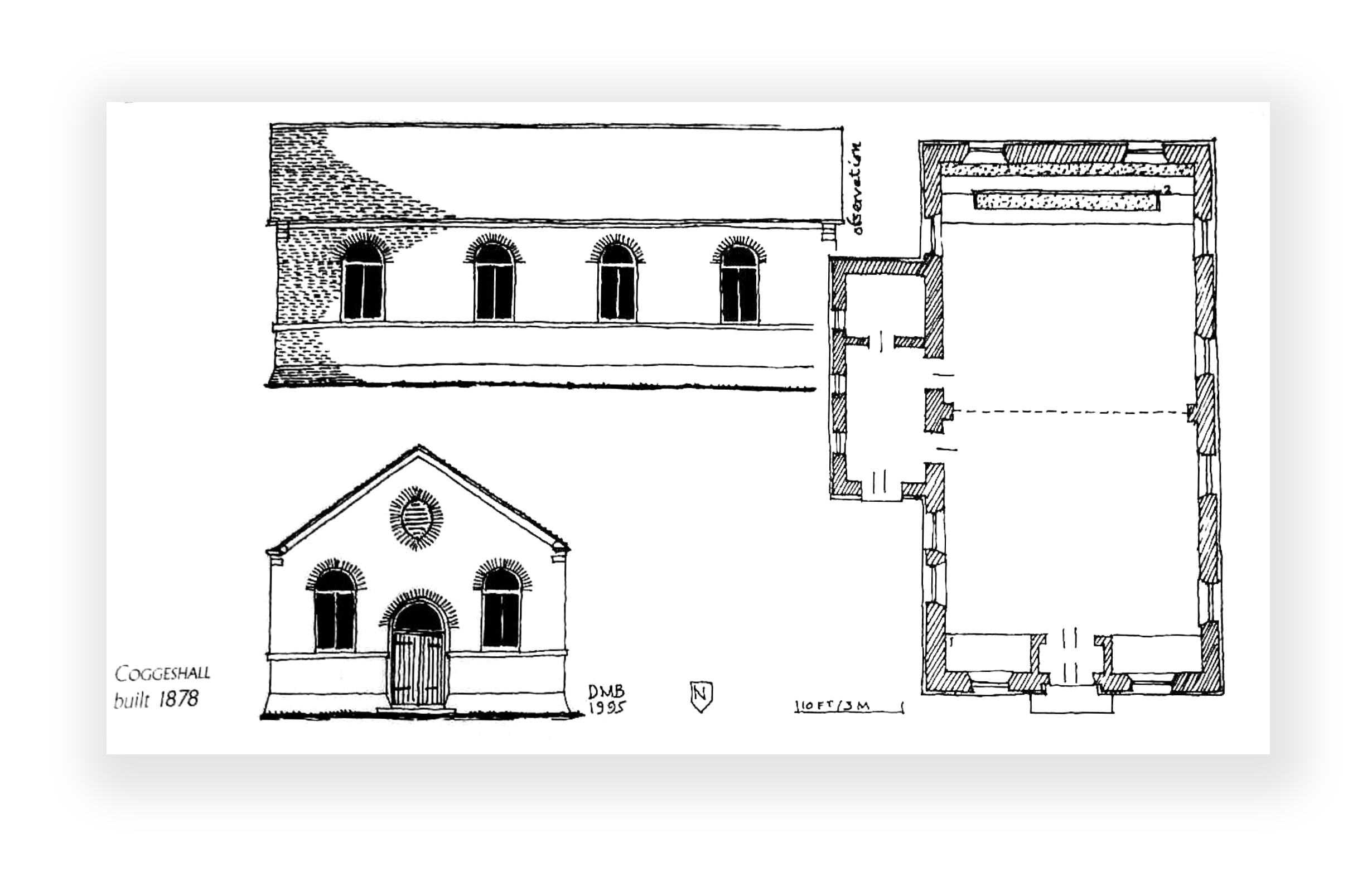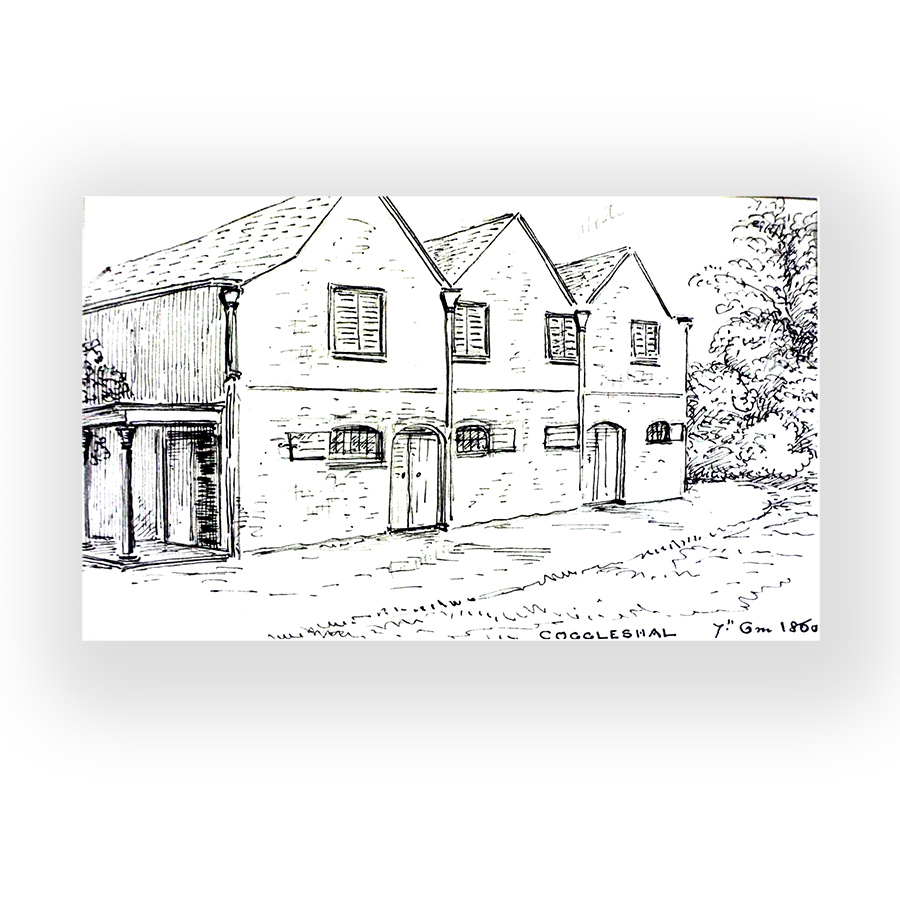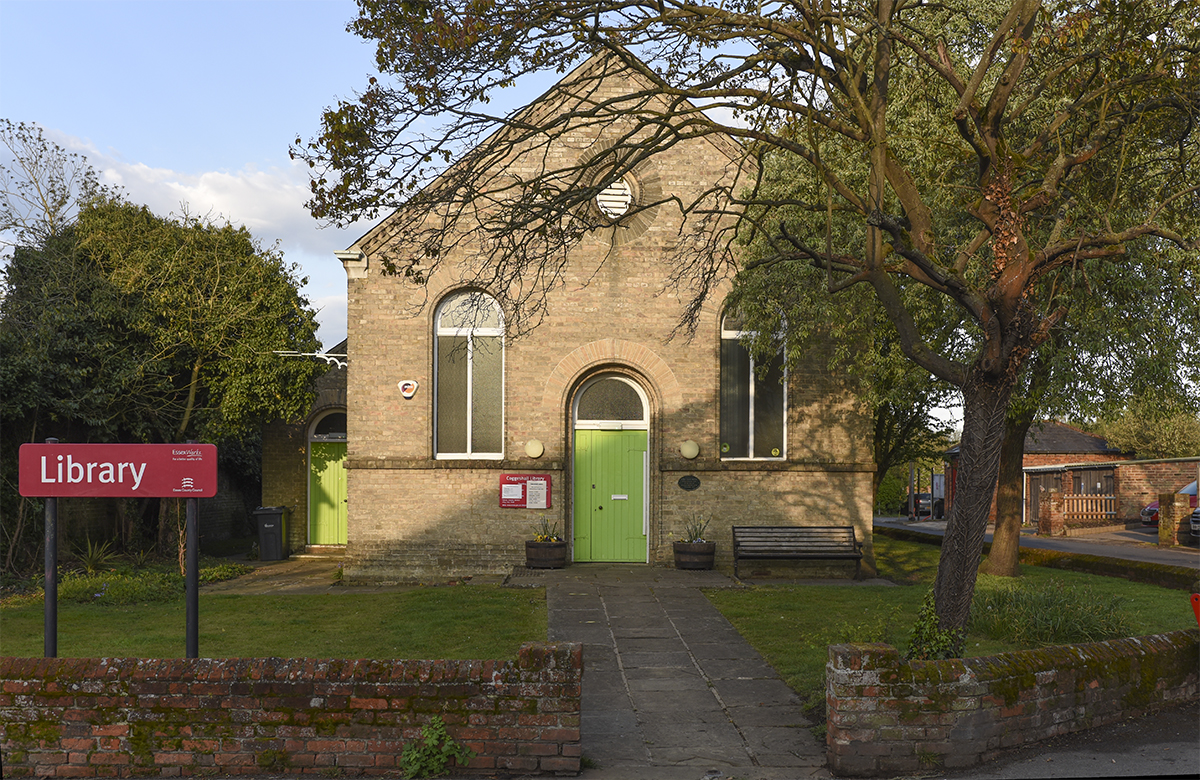THE FRIENDS’ MEETING HOUSE

The Religious Society of Friends, also called the Quaker Movement, was founded in the 17th century by George Fox. Quakers were persecuted for their beliefs which included the idea that the presence of God exists in every person, they were pacifists and refused to take legal oaths. Quakers rejected elaborate religious ceremonies, had no official clergy and believed in spiritual equality for men and women.
The Quakers had one of their first strongholds in Coggeshall. There refusal to confirm, to pay tithes to the established church and their refual to take oaths meant that they were seen as undermining the authority of the state and many were fined and imprisoned. It’s founder, George Fox, came to Coggeshall in 1655 and spoke to a meeting of two thousand people. When the Quaker missionary James Parnell visited Colchester early in 1655 he walked to Coggeshall to meet Fox, but his movements had been watched and he was arrested here and taken to Colchester Castle where he later died of starvation and neglect aged only nineteen.
Requiring no church Quakers could meet anywhere and in those early years used private houses. They did however need their own graveyard as they could not be buried in consecrated land. Coggeshall’s first Quaker burial ground was at Crouches, acquired in 1693 on a 480 year lease.

Html Light Grey background ignore this text it is just to increase the picture size
ignore this text it is just to increase the picture size
ignore this text it is just to increase the picture size
ignore this text it is just to increase the picture size
ignore this text it is just to increase the picture size
According to Butler, (Butler M, The Quaker Meeting Houses of Britain, 1999, vol. 1, pp. 178–9). The first permanent meeting house here was a large structure (seating 500) built in the early eighteenth century, on the site of the present building and which stood within the burial ground. A meeting house was certainly in use in 1747 but this was replaced with a new structure in 1809-10 which may be the one illustrated here. It had three parallel gabled roofs facing the street, with a single internal space, the roof carried on two pairs of columns and a loft along the back wall. Butler describes the building as ‘unlike any other’.
‘The early eighteenth-century meeting house’, a drawing of 1860 (Friends’ House Picture Library).
In 1750 the Coggeshall Meeting had 106 members, more than Colchester. The original burial ground was enlarged in 1706 but was said to be full in 1783. The Quakers owned numerous small and large pieces of ground and several houses – some used by the Society and some leased to provide income. Most of it in Crouches or Stoneham Street, including a site on which the Vestry built a workhouse in 1801 and on Bridge Street.. In 1856, a new burial ground was opened at Tilkey which is still there, next to Tilkey Cottage (on the corner with Buxton Road)
The Doubleday’s were an influential and philanthropic Coggeshall Quaker family. Sarah Doubleday started a Coggeshall grocer’s shop in 1789 and her youngest brother William and his wife Hannah, continued the business when she retired. They are first mentioned at the Meetings from 1797. They had eight children and William junior (born 1805) stayed with his father to help run the grocery business. His brother Henry, was equipped with a remarkable brain, he had no interest in the grocery business but followed his own path and has his own story; Henry Doubleday. Another brother Edward, was also possessed of a remarkable intellect and he created the first catalogue of British Lepidotera and became curator of the Botany Department of the British Museum.
The original meeting house was replaced in 1877 by the present building from plans furnished by William Doubleday (1846-1938 the son of William junior), an architect who had his practice in Birmingham. It was built by Mathias Gardner of Church Street. The new meeting house seated about 120 in two equally-sized chambers, which were originally separated by ‘a single large sash shutter’(Butler).

The number of members began to decline; in 1885 there were 23 and in 1888 there were 21. By 1959 there were only eleven members left and in 1965 the Meeting was closed and the Meeting House leased to the County Council for use as a public library. The original fittings were stripped out without being recorded as far as I am aware, and it remains as a library today.